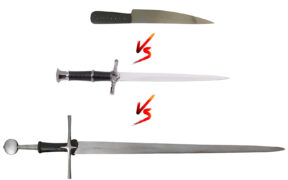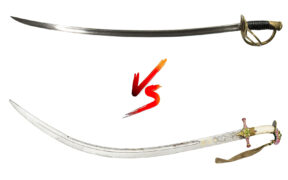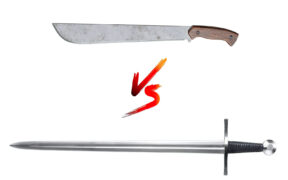Long Knife vs Short Sword: What Makes Them Different?
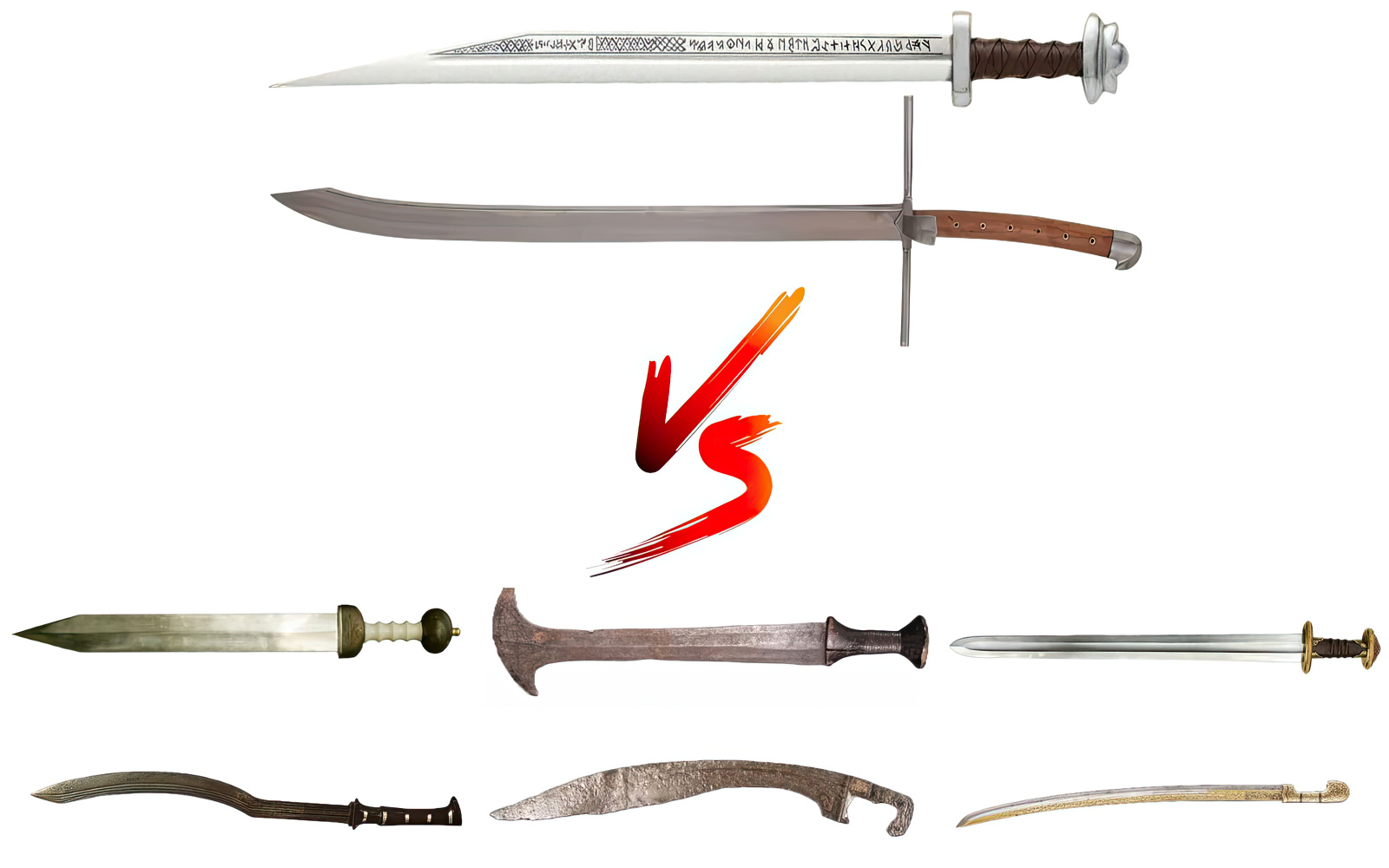
Despite being designed for specific purposes, long knives and short swords can be difficult to distinguish from one another. While there are overlapping characteristics, there are major differences that set them apart.
This article explores the long knife and short sword, their characteristics, similarities and differences, along with histories and applications.
Terms, Characteristics, and Design Differences
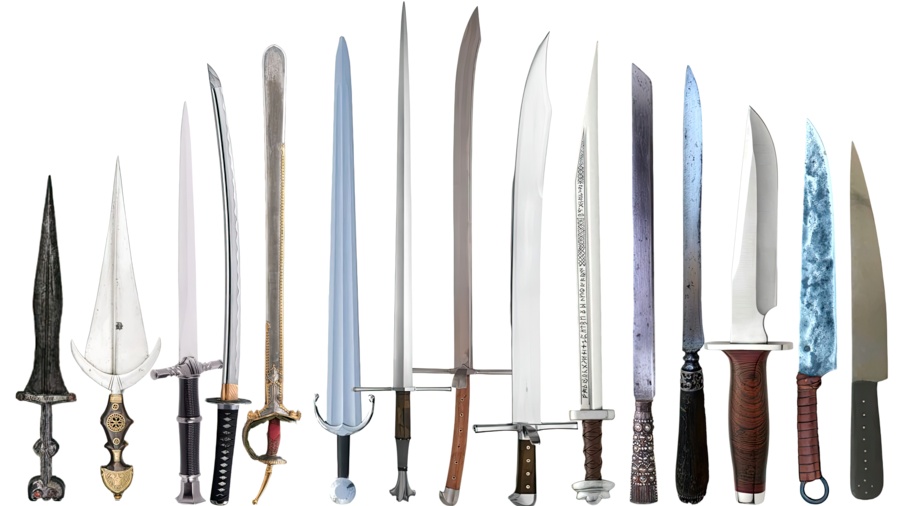
Both knives and swords can be used for cutting or battle. Throughout most of history, these terms are often used interchangeably, causing much confusion among readers.
“Knife” as a modern term comes from Indo-European “gneyb”, Proto-Germanic “knibaz”, Old Norse “knifr”, and Old and Middle English “knif”, terms that roughly translated to “cut” or “pinch”.
Meanwhile, “sword” comes from Old Norse “sverd”, Proto-Germanic “swerdam”, Old English “sweord” or “swyrdym” or Dutch “swaard”, all of which translates to “weapon” or “cutting”.
The confusion begins when one is named after the other. For example:
- Makhaira (ancient Greek) – Translates to “knife”, but is the name for a type of sword.
- Messer (German) – Translates to “knife”, but is also a name for swords such as langes messer (meaning “long knife”)
Blade
Long knives are generally forged from high-carbon steel, but can be made from stainless steel as they do not require as much flexibility as short swords.
Their straight or curved single-edged blades mostly feature a flat profile with a thicker spine, reinforced core, sharp edge, and pointy tip.
Different edge bevel types such as flat “v”-shaped, hollow ground, and scandi grind are available depending on cutting or self-defense needs. Some may also have fullers to decrease their overall weight or ridges like the Viking seax knives.
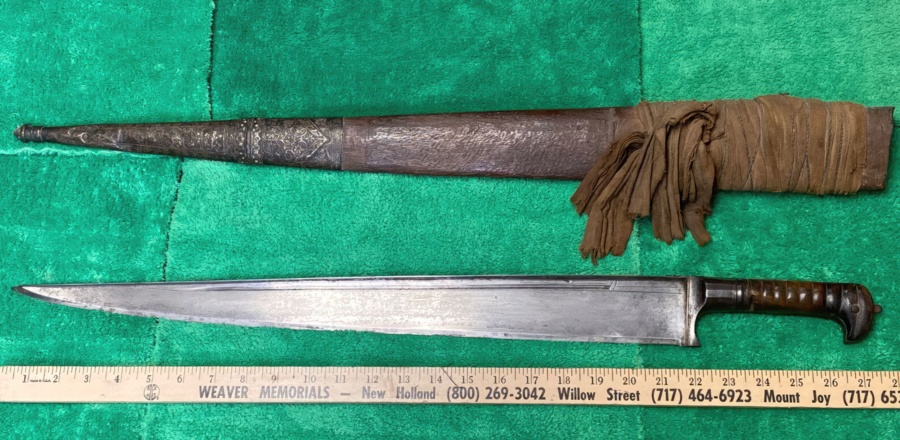
In comparison, short sword blades have more variety, available in single or double-edged straight, curved, or recurved forms. There are no rules either for the blade’s shape, cross section, or tip.
Examples include broad blades like a cinquedea or even leaf-shaped ones like an ancient Greek xiphos sword while the tips can be rounded, broad, and more.
Swords also can have blades with fullers, reinforced spines, and different points of balance as seen in a tip-heavy falchion or hilt-centered hunting sword.






Hilt
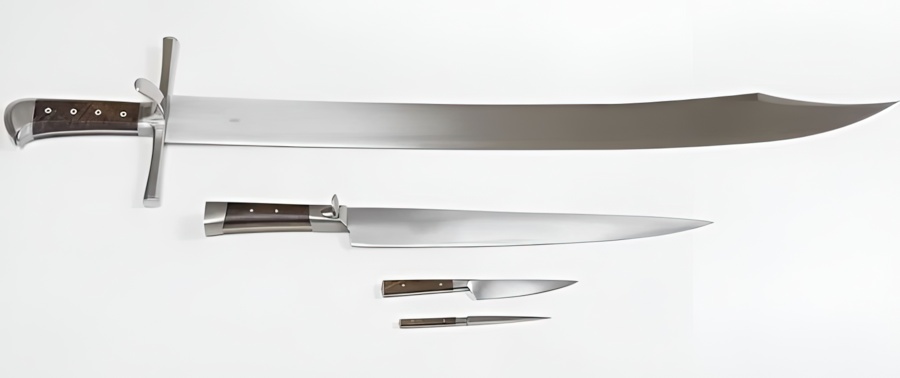
Long knives, typically wielded with one hand, often feature a handle long enough for an additional half-hand grasp in larger models. They lack hand guards, and their slab tang, clearly visible, is fastened to the handle using several rivets.
The handles are commonly made from wood or bone and may be entirely wrapped in leather or cord. Instead of a traditional pommel to maintain balance, these knives use a metal cap, often shaped like a narrowed beak or designed with a recurved style.
For short swords, they have hilts similar to that of a typical sword. This means the handles can be one-, hand-and-a-half, or two-handed. Hand guards and pommels of varying designs are present for protection and balance. Depending on the type of short sword, some may have extensions or complex guards, as seen in a cutlass with a basket guard or a cavalry short saber with a knuckle guard.
For some, the hilt design is what differentiates a knife from a sword.
Scabbard
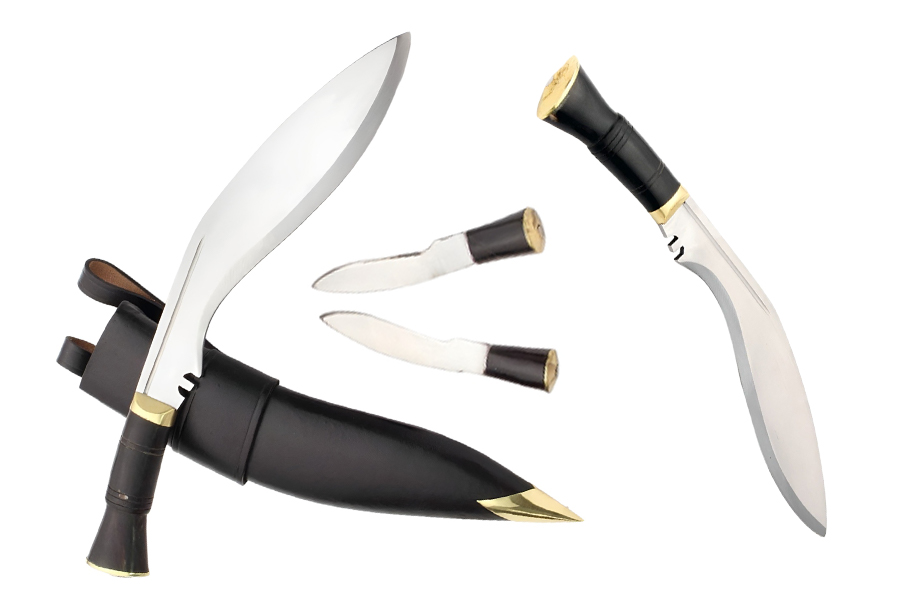
Scabbards are important for protecting the blade against environmental elements, corrosion, and rust. It also prevents unintentional injury and makes the blade easier to transport.
- Long knives – Usually stored in leather sheath, but may have wooden scabbards. These can be strapped onto the belt, horse, carried in a sash, and more.
- Short swords – Wooden scabbards are wrapped in leather or other protective material. They hang from the belt and can be ornate, representing its owner’s higher status.
Size and Weight
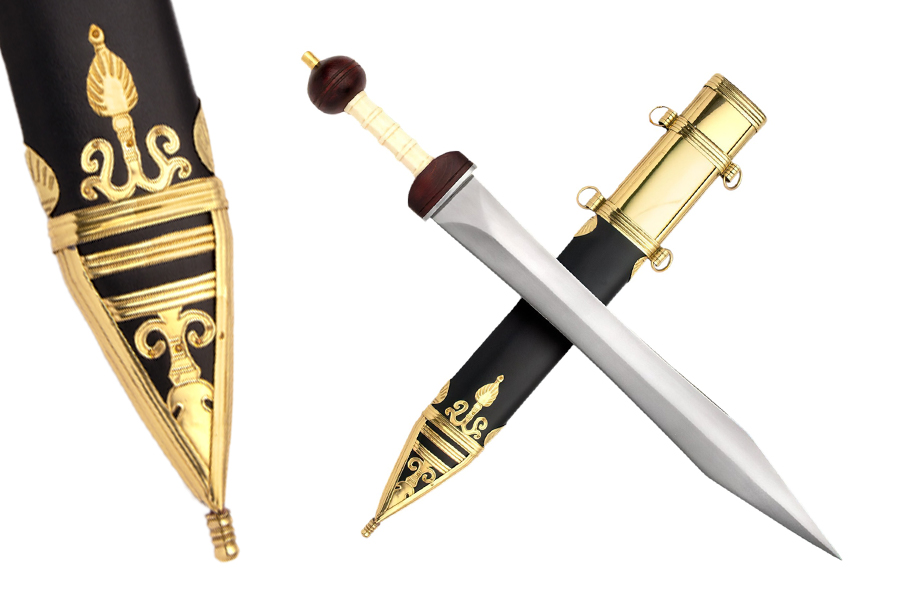
Long knives and short swords vary in length. The general principle is that long knives are shorter than short knives and vice versa. However, there are exceptions for each category.
Long knives range from 10 to 15.7 inches (25 to 40 cm), with some reaching 23.6 inches (60 cm) as seen in the Afghanistan Peshkabz. Fairly light, they have an average weight of 0.66 to 1.76 lbs (0.3 to 0.8 kg).
Short swords can be as short as 12 inches (30 cm) and go up to around 25.6 inches (65 cm), and weigh around 1.1 to 2.42 lbs (0.5 to 1.1 kg).
Longer knives tend to have a more forward center of balance whereas swords have the opposite or central hilt balance for thrusting precision.
History
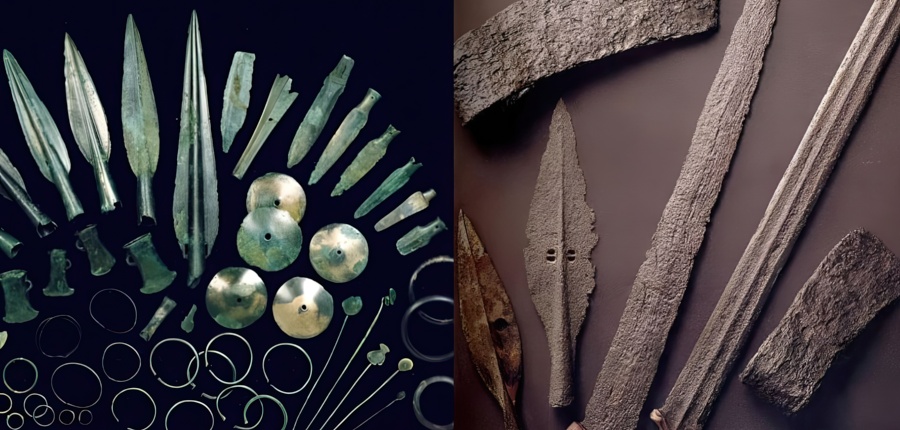
Knives are some of humanity’s earliest tools, dating back to 2.5 million years ago. Made from various materials such as stone, bone, flint, and more, they could be mounted on a stick to create a spear or long knife.
Around the 30th century BCE, advances in technology resulted in the first types of bronze swords with the length of a larger knife. By the 16th century BCE, the first bronze shortswords became effective in warfare and combat, becoming significant in war and as a status symbol.
Some short swords had the same attributes as a long knife, used as an everyday tool or in combination with a shield in battle. Some examples of shortswords similar to knives are:
- Iberian falcata
- Greek kopis
- Thracian sica
- Chinese zhibeidao or song dao
- Turkish yatagan
In certain cases, long knives were used as swords. Examples include the German langes or grosse messer and the Viking or Saxon seax. In some cases, these could reach 27.5 to 55 inches (70 to 140 cm) long. Since long knives were easier to produce and master, they were used as agricultural tools while shortswords turned into flamboyant artistic pieces during the Renaissance (14th-17th century).
Combat and Uses
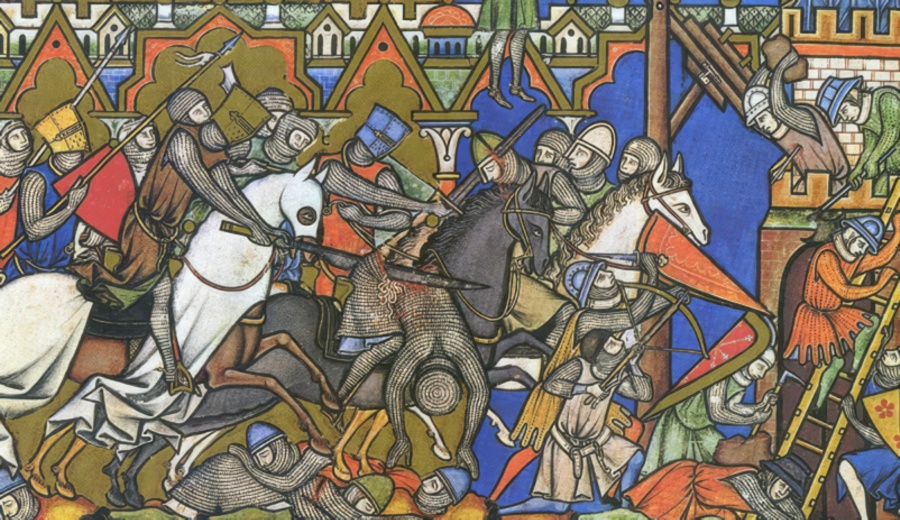
Another difference between the long knife and short sword apart is the technique behind it.
Long knives can be used for self-defense or as a daily utilitarian tool in tasks like bush clearing, rope cutting, and more. Easier to conceal, they are great for unorthodox fighting methods such as the ice-pick or reversed grip. These styles tend to become less effective as their length increases.
Short swords have characteristics of a weapon made for war but may have knife-like attributes. A good example is the kukri, suitable for daily life while excelling in battle that require versatile movements. Ideal in combination with a shield or close combat, it excels in thrusting, stabbing, and slashing.
